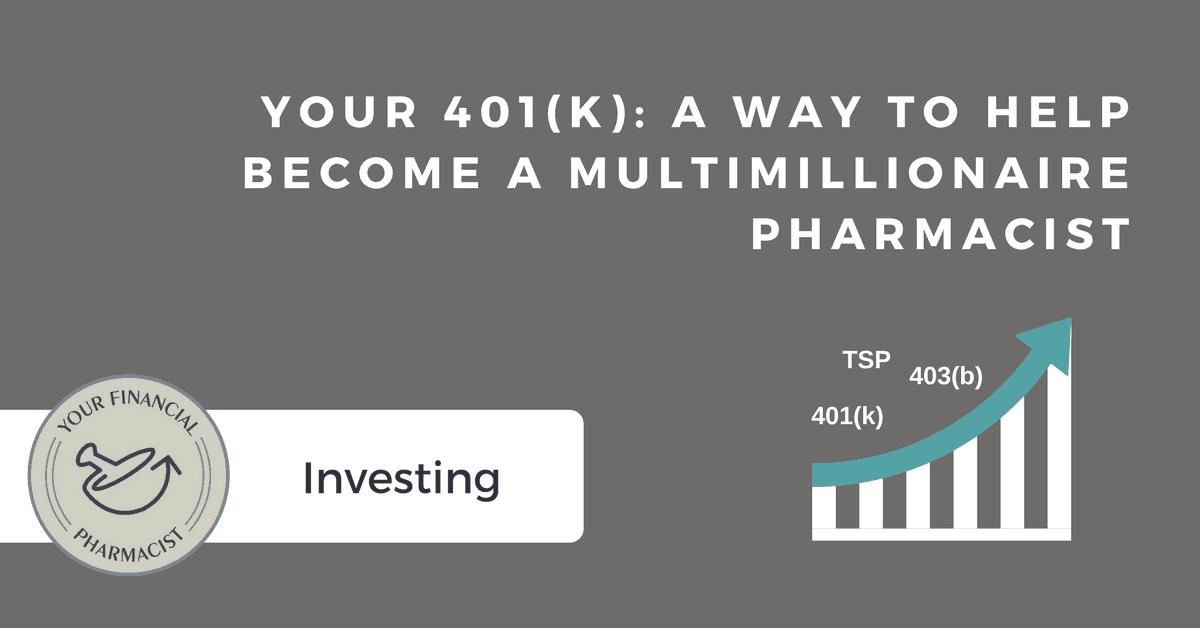Over the past six months, I have given a handful of talks to various groups of pharmacists and pharmacy students outlining how we (myself included) can better manage our money. One of my favorite questions to ask the audience is “How confident are you in your ability to become a millionaire by the time you retire?”
The typical response is one of silence.
So I ask for a raise of hands and just about every time a small handful will say they are “very confident” they can save a million dollars or more while the majority say they are not confident at all they can achieve this goal.
It is clear that talking about becoming a millionaire is not a comfortable topic for most.
For some, I get the feeling it is uncomfortable to talk about becoming a millionaire in a culture where we don’t openly talk about money very much. Separate conversation for another day but if we want to help each other and teach our kids how to handle money appropriately and wisely, we need to talk about this more often. For others, I think the mountains of student loan debt make it hard to see into the future of saving a million dollars. And for many, I get the impression that accruing a million dollars seems like a scary number that is out of reach.
In fact, most millionaires inherited their money, correct?
I thought the same until I read The Millionaire Next Door by Tom Stanley where his research shows that the majority (80-85%) of millionaires in America are 1st generation. That means that most millionaires are you and I that diligently plan for the future and save each and every month over a long period of time.
Here is the thing. We have to change the tone of this conversation about becoming a millionaire. It is not a bad thing, it is not greedy and it certainly is not impossible. In fact, I contend that most pharmacists that plan to retire at a reasonable age (say 65-70 years old), that will live into their 80s or 90s and desire to have a lifestyle that resembles their working years (or somewhere close), it is not a question of “Do you think you can save a million dollars?” but rather a fact that “You need to save a million dollars.”
The math doesn’t lie.
Here is an example to highlight this using a Nest Egg Calculator. I would encourage you to run the numbers yourself based on your personal situation. If a pharmacist is 30 years old and has $50,000 saved in retirement, plans to retire at 65, will live to 85, desires to live off of 80% of his/her current income in retirement and is modest in their investment approach, he/she will need to have approximately $5 million saved for retirement.
That makes sense when you think of inflation and the fact that there would be twenty years (after retirement) where savings would need to fund a lifestyle where there is no income. Certainly the variables can change such as working longer, living off a lower percentage of your current income during retirement, or assuming you will have social security benefits available. However, no matter what changes you make (unless you work until you die or close to you die), you ‘need’ to have $1 million dollars.
Therefore, we need to talk about the concept of becoming a millionaire much differently. It’s not about being rich.
So Why Save to Be a Millionaire?
There are five main reasons that motivate Jess and I to stay debt free, develop a plan for how money is spent each month and consistency save for retirement at the expense of spending today.
#1 – To be in a position to give away money in a way we have never been able to do so before. I firmly believe giving should be an important part of every financial plan from the beginning (even during debt repayment) but what I’m talking about here is giving at a much greater level and being in a position to meet the obvious needs we see each and every day.
#2 – Having a secure financial future for our family. As outlined above, saving a million dollars or more will be necessary to take care of our family if we want to retire at a reasonable age (even if we live off of 50% of our current income during retirement). Again, it’s not about being rich.
#3 – To leave an inheritance to our family that will have an impact for generations to come. Compounding growth is an amazing phenomenon…$3 million dollars left to the next generation can easily become $30 million dollars or more for the generation that follows. Lots to be said here about the pros/cons of leaving money to the next generation but for now, let’s leave it at this and assume the next generation will handle that money wisely.
#4 – To teach our boys how to work hard and that if you set a goal and work towards it, you can achieve it.
#5 – Getting to the point of having the flexibility to do what we want, when we want rather than working out of necessity. Don’t take this the wrong way. I love the work that I do. However, I think many (including myself) would prefer to be in a position to choose what work we do when we do it. That may mean doing the same exact thing as I am doing now but the difference is having the independence to make that decision beyond any salary influences.
Your Financial Homework: Do you believe you can become a millionaire? If not, what is holding you back? If you haven’t already, run you own calculations using the Nest Egg Calculator to see if you are on track for saving each month to meet that goal. Remember, saving for retirement is just one part of your financial plan and I would not recommend you focus solely on this goal at the expense of giving, paying down debt or building an emergency fund. There is great value in having a stepwise approach to balancing the competing financial priorities that are thrown at you every day.
Join the YFP Community!
Recent Posts
[pt_view id=”f651872qnv”]





